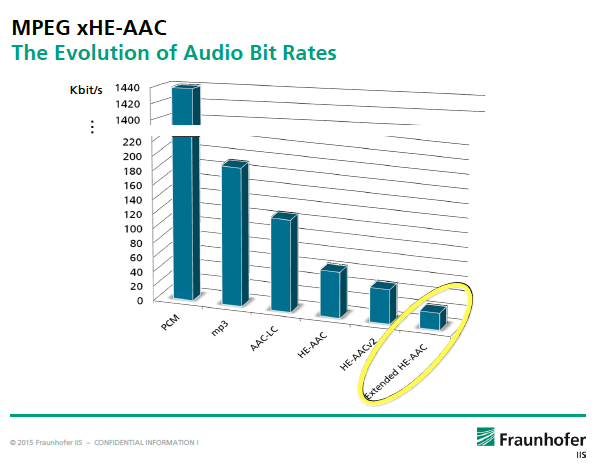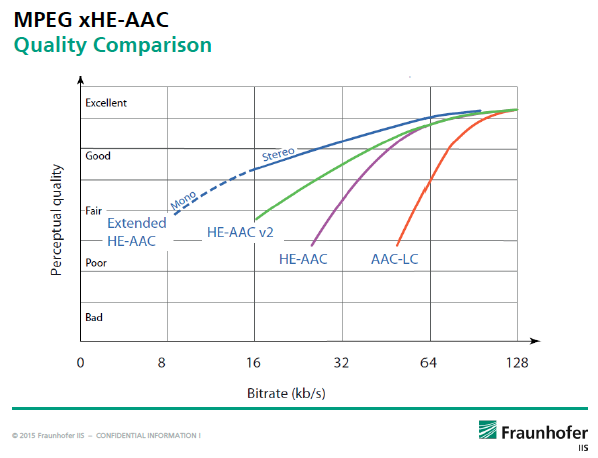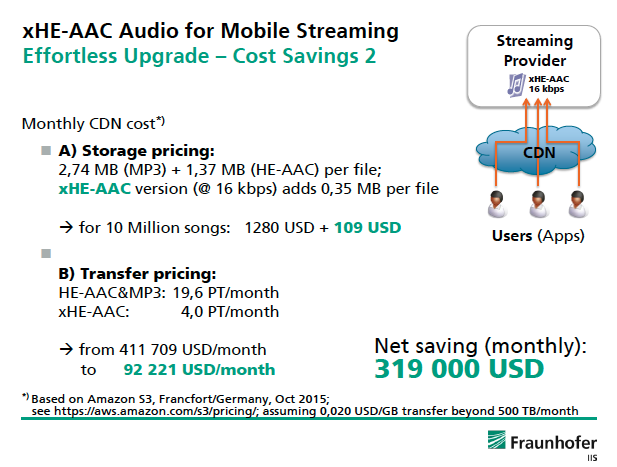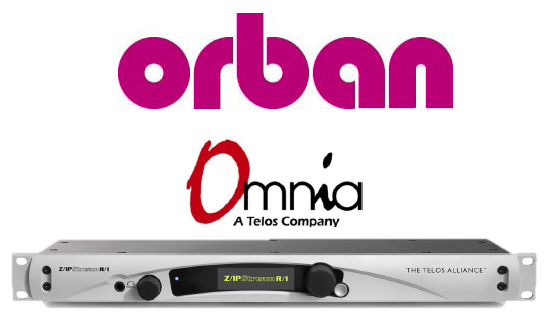A new audio codec has been introduced that will dramatically reduce the cost of audio streaming on the web, on mobile phones, and improve audio encoding for digital radio.
Fraunhofer’s Alex Zink explained details of the innovation at the Digital Broadcasting Symposium in Malaysia this week.
The new MPEG coding, called xHE-AAC is the latest upgrade to the AAC family of audio compression algorithms, pioneered by the not for profit research organisation Fraunhofer. It provides extended high efficiency (xHE) encoding of AAC compression, which explains the acronym.
“Imagine your old mp3 audio at 128kbps, now cut the bit rate in half, but still achieve the same quality,” said Zink. “The intended applications for the new codec are streaming, downloads and digital radio.”
The backwards compatible coding delivers good quality audio at bit rates as low as 16 kilobits per second.

The new codec will be highly beneficial for mobile streaming.
In the past consumers needed a high quality connection to receive good quality audio, but with this codec listeners can now get good service on even 2G mobile phone systems.
“It improves the listener experience by less buffering and lower data costs, for those concerned with the cost of data, you can stream more than 2 hours per day of stereo content (xHE-AAC at 16kbps) at the price you would have paid for 17 minutes of streaming on previous codecs using mp3 at 128 kbps. Reliable streaming over 2G networks has been tested successfully in India, where there are millions of potential new listeners who could be reached if audio could be successfully transmitted over 2G networks,” said Zink.

This will reduce costs of mobile audio streaming for broadcasters and consumers. Similar benefits will also be delivered for downloading and storage.
Zink gave the example of how audio streaming companies could save over $300,000 per month using the new codecs.

In the USA, NPR is recommending xHE-AAC for future streaming services and Spotify is encouraging lower bitrate audio support in devices.
Fraunhofer and Telos previewed the next generation Z/IPStream professional streaming solutions with xHE-AAC Encoding at IBC at the end of last year. Now Omnia and Orban have both released professional streaming encoders.

The new codecs are also good news for DRM digital radio broadcasts.
“For DRM, the digital radio system for digitizing the AM bands, initially there were dedicated speech codecs because the system needed low bit rates, but now the speech codecs allowed DRM to carry audio in the most robust AM transmission modes and multiple services in less robust modes,” said Zink.
He showed several DRM receiver models which can be upgraded to the new codec with a simple software upgrade. The Avion DRM receiver model manufactured in India, already uses the latest codec.
The new codec will dramatically improve storage, audio streaming and digital DRM Radio by bring down the price and delivering quality and lower bits rates.

